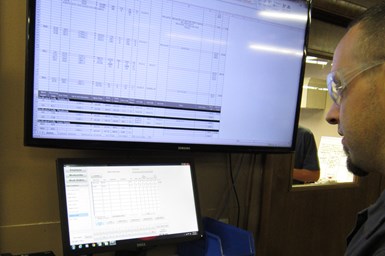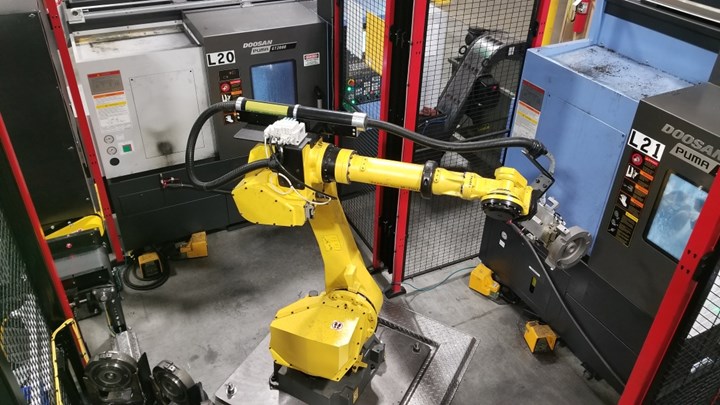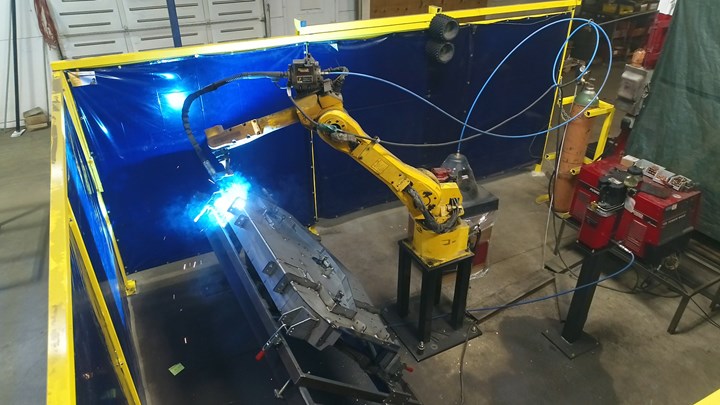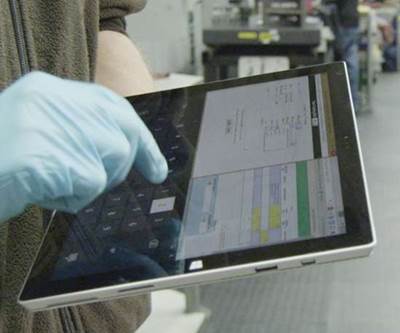ERP Leads Shop to Adopt a Paperless Initiative
Enterprise resource planning software is not only enabling Chapter 2 to better manage its range of machining and manufacturing capabilities but also helping it go paperless.

Chapter 2’s paperless initiative was a natural next step after adopting enterprise resource planning software.
Amanda Johnston, marketing specialist for Chapter 2 Inc., says the contract manufacturer has expanded and implemented a number of changes to become more efficient since it was named a Modern Machine Shop Top Shops benchmarking survey winner in 2015. (See my recent column for more information about this annual survey from our sister publication in which you might consider participating.)
The Lake Mills, Wisconsin, company has a range of in-house manufacturing capabilities, including CNC machining, welding, assembly and painting, as well as workholding device and tool-and-die manufacturing. It also still offers the tool and die services it was founded upon, having a full-service toolroom with journeymen toolmakers creating jigs, fixtures, dies and molds.
Over the last few years, Chapter 2 has added a wealth of new capital equipment. This includes turning centers, horizontal machining centers, a new side-down-draft paint booth, urethane molding process and coordinate measuring machine (CMM). It has also expanded its facility by 20,000 square feet, bringing total floor space to 100,000 square feet.
The shop also has added two robots to create two cells producing flywheels for small engines. Each cell features two CNC lathes. This enables one person to tend two machines, whereas before adding the robots, one person for each of the four machines was required. The cells increase throughput and also eliminate the repetitive motions formerly required of these employees to maneuver 20-pound workpieces by hand.
Chapter 2 has also made significant changes on the software side of things. It moved away from basic accounting software to an enterprise resource planning (ERP) system from Global Shop Solutions in 2016. The issue with the accounting software is that it lacked work order and shopfloor control capabilities that the company felt it needed. That software worked fine for inventory management, but had no job tracking capabilities. Plus, one part number could have a variety of spreadsheets tied to it. All this was exacerbated given that the company had so many different manufacturing departments through which a job might run.
With ERP, all job information is tracked in one place, and the shop can easily see the status of every job on the shop floor.
Since adding the ERP system, all job information is tracked in one place and the shop can easily see the status of every job on the shop floor. “It also has eliminated a lot of paper use, as employees used to hand in a printed time card at the end of the day where they listed what jobs they ran, how many parts were produced, run time and so on,” Johnston says. “Now, the ERP system captures all the information for us when employees log in to a job within the system.”

Chapter 2 is also embracing robotic automation, in this case for a cell (one of two) that produces flywheels for small engines.
Chapter 2 has also developed its own computer application, which has further reduced its reliance on paper documentation. “Previously, we printed hard copies of all work instructions and inspection logs that employees then filled out by hand at the end of their shift,” she explains. “Those logs were then filed in cabinets and stored. Today, employees use our app, and all that information is stored in a database.”
The first job for which Chapter 2 chose to implement this paperless process was the flywheel part mentioned above, a job that required a number of inspection logs. The process is also helpful when employees’ time is split between multiple jobs by enabling a more effective means of tracking true labor cost for each job. In addition, the process acts as a customer service tool. For example, if a customer were to call asking for immediate delivery of parts for a given job, a manager could instantly see how many parts for that job have been completed and could be delivered. It would also be easy to provide a good estimation of delivery time for the remaining parts.
Work order processing is easier, too. Previously, orders were entered into separate spreadsheets. Now, they are entered once into the ERP system and are automatically populated through scheduling, costing, shipping and so on. This centralized system also enables the company to see if a given machine tool is overloaded and, if so, redirect work to similar machines that are available. The same goes if a machine unexpectedly goes down. In addition, being able to better track capacity utilization helps shape decisions as to whether a new machine is needed or if an existing machine is underutilized.

ERP is particularly helpful for Chapter 2 because it has so many different manufacturing processes in house.
Johnston says the software also enables Chapter 2 to generate more accurate quotes because it can track true costs and update them more frequently as well as view job history. Operators are also able to use the software to add notes to a specific job describing reasons why the job might have taken longer than expected.
Global Shop Solutions assisted with ERP implementation, which required four primary steps. First, existing data needed to be reformatted and uploaded into the system. Employee training was next. This lasted six to nine months before the “go-live” date, in which a Global Shop Solutions representative would check in to monitor progress and offer advice. Select Chapter 2 employees also attended a weeklong ERP boot camp offered by the software company. The third step was establishing a four-month “test company” to enable employees to test and get used to the system (and learn from mistakes) before it went live. Finally, Chapter 2 went live with the system while maintaining its former process before officially transitioning fully to ERP.
Related Content
10 Ways AI Might Impact Manufacturers
Artificial intelligence offers the promise of assisting decision-making processes and boost overall manufacturing efficiency.
Read MorePrecision Machining Technology Review: September 2024
Production Machining’s September 2024 technology showcase includes some of the latest technology from Expand Machinery, Paperless Parts, Monaghan Tooling Group, Walter USA and more.
Read MorePrecision Machining Technology Review: August 2024
Production Machining’s August 2024 technology showcase includes some of the latest technology from SW North America, Tsugami, Siemens, Select Manufacturing Technologies, Hurco and ECI Software Solutions — all on display at IMTS 2024.
Read MoreERP Software Enables Manufacturers to Maximize Operational Efficiencies
PMTS 2023: JobBoss2 from ECI Software Solutions assists manufacturers with decision-making and reveals opportunities for growth and cost savings.
Read MoreRead Next
Sometimes No-Quoting RFQs is Essential for Efficiency
Accepting only RFQs that work toward a company’s goals and learning how to manage those efficiently can build better businesses and customer relationships.
Read MoreUse Your Machine Shop Management System as a Sales Tool
Why not leverage an effective shop management system for your sales/marketing advantage in today’s competitive market?
Read MoreBringing a Broaching Tool Manufacturer into the 21st Century
This broaching tool manufacturer had been making its products the same way since 1945, but a new owner updated everything, from the equipment to the culture and the way it does business.
Read More






















